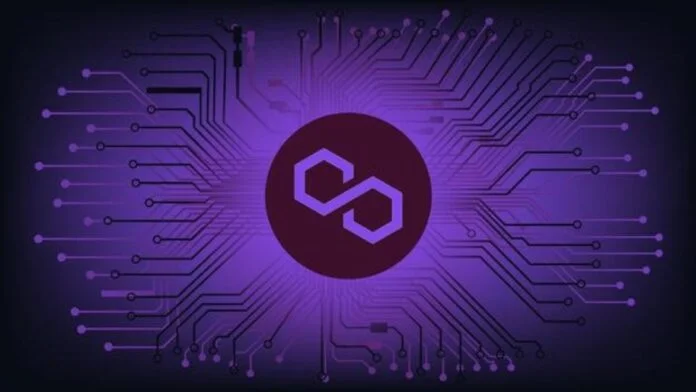Blockchain technology has undergone significant advancements to address scalability issues, and Polygon has emerged as a key player in this space. Polygon Supernets, a groundbreaking concept within the Polygon ecosystem, takes scalability to the next level. In this blog post, we’ll explore what deploy Polygon Supernets are and provide a comprehensive guide on deploying them to harness the full potential of a scalable and efficient blockchain network.
Understanding Polygon Supernets
Polygon, formerly known as Matic, is a layer 2 scaling solution designed to enhance the scalability and usability of blockchain networks. Supernets within the Polygon ecosystem are a recent innovation that aims to aggregate multiple blockchain networks under a single umbrella, creating a seamless and interconnected experience for users and developers.
Polygon Supernets facilitate interoperability and communication between different blockchain networks. This interoperability is achieved by connecting multiple chains, enabling the seamless transfer of assets and information across these interconnected networks. The result is a unified ecosystem that combines the strengths of various blockchain networks, offering a holistic solution to scalability challenges.
Why Deploy Polygon Supernets?
- Enhanced Scalability: Supernets address the scalability limitations of individual blockchain networks by aggregating them. This aggregation significantly increases the overall throughput and transaction processing capacity of the interconnected networks.
- Reduced Latency: By connecting multiple blockchains, Supernets minimize the latency associated with cross-chain transactions. This results in faster and more efficient transfers of assets and data.
- Improved User Experience: Supernets create a unified experience for users and developers by allowing them to seamlessly interact with different blockchain networks. This enhances usability and opens up new possibilities for decentralized applications (dApps) and services.
- Cost Efficiency: The aggregation of multiple blockchain networks under a single Supernet can lead to cost savings. Users benefit from reduced transaction fees and improved resource utilization across the interconnected networks.
Deploying Polygon Supernets: A Step-by-Step Guide
Deploying Polygon Supernets involves several steps, and it’s essential to follow a structured approach to ensure a smooth deployment process:
- Understand the Requirements:
- Familiarize yourself with the technical specifications and requirements for deploying Polygon Supernets.
- Ensure that your chosen blockchain networks are compatible with the Polygon Supernet architecture.
- Select a Hosting Environment:
- Choose a suitable hosting environment for deploying your Supernets. Consider factors such as scalability, security, and performance.
- Install Polygon Supernets Software:
- Install the necessary software components for deploying and managing Supernets. Follow the official documentation provided by the Polygon team for detailed instructions.
- Configure Network Interoperability:
- Establish connections between the different blockchain networks you intend to include in your Supernets. Configure cross-chain communication protocols to enable seamless interoperability.
- Security Setup:
- Implement robust security measures to protect your Supernets from potential threats. This includes firewall configurations, encryption, and regular security audits.
- Monitor and Maintain:
- Set up monitoring tools to keep track of the performance and health of your Supernets.
- Establish a maintenance schedule for software updates, bug fixes, and security patches.
- Test Transactions:
- Conduct thorough testing of cross-chain transactions within your Supernets. Identify and resolve any issues related to interoperability, latency, or transaction processing.
- Community Engagement:
- Engage with the community and stakeholders to gather feedback and address any concerns. Community involvement is crucial for the success and adoption of Polygon Supernets.
Challenges and Considerations
While deploying Polygon Supernets offers numerous benefits, it’s essential to be aware of potential challenges and considerations:
- Compatibility Issues:
- Ensure that the blockchain networks you intend to connect within your Supernets are compatible and can seamlessly communicate with each other.
- Security Risks:
- Implement robust security measures to protect against potential vulnerabilities and attacks, as the aggregation of multiple networks can attract unwanted attention.
- Regulatory Compliance:
- Stay informed about regulatory requirements related to operating interconnected blockchain networks. Ensure compliance with relevant regulations in the jurisdictions where your Supernets operate.
- Community Education:
- Educate users and developers about the benefits and functionalities of Polygon Supernets. Community understanding and support are crucial for widespread adoption.
In conclusion, deploying Polygon Supernets represents a significant leap forward in addressing the scalability challenges of blockchain networks. By following a structured deployment process, addressing potential challenges, and engaging with the community, developers and organizations can unlock the full potential of interconnected blockchain networks. As the blockchain ecosystem continues to evolve, Polygon Supernets stand as a testament to the industry’s commitment to creating scalable, efficient, and user-friendly decentralized solutions.

